Last updated on
New doors may or may not come with frames, depending on the specific product purchased.
Are you in the market for new doors but unsure if they come with frames? The answer may surprise you. Many people assume that when they purchase a door, the frame comes included.
However, this is not always the case. Whether you’re looking to replace an old door or install a brand new one, it’s important to understand what components are included in your purchase.
In this article, we’ll explore whether or not new doors come with frames and what factors may affect your decision-making process when it comes to purchasing a door and frame combo. So let’s dive in!
Key takeaways:
- Not all doors come with frames included.
- Doors can be classified into different types based on their material, design, and function.
- Door frames are typically made from wood or metal and come in various sizes and styles.
- Materials commonly used for door frames include wood, metal, and composite.
- Pre-hung doors come with the frame already attached, making installation easier.
Table of Contents
Types of New Doors
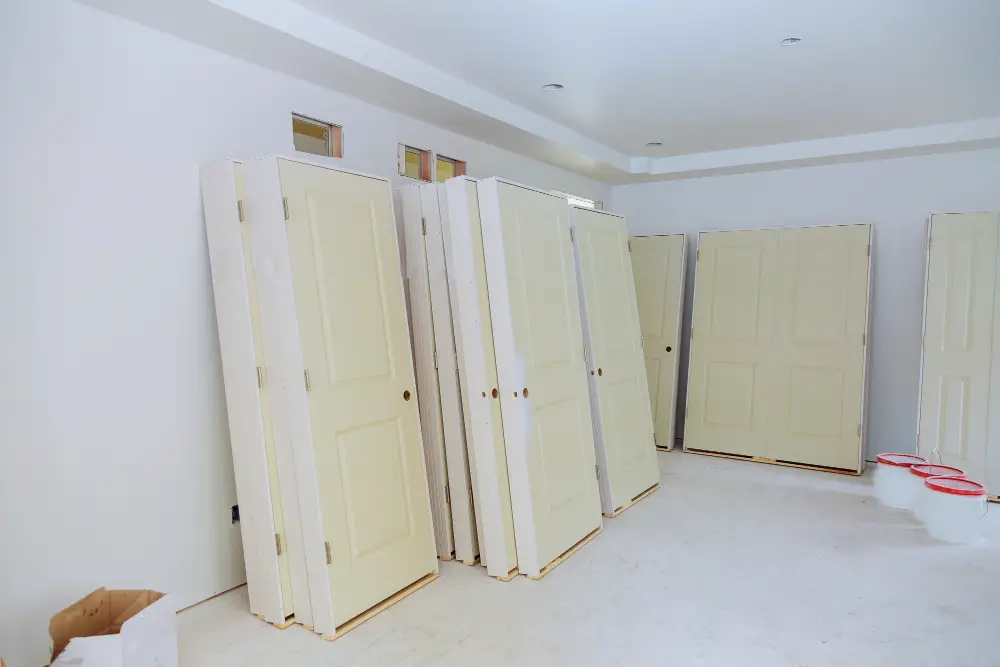
Each type has its own unique features and benefits that make them suitable for different applications. Some of the most common types of new doors include interior, exterior, French, sliding glass patio doors and storm doors.
Interior Doors: These are designed for use inside your home or office space. They come in a variety of styles such as panelled or flush designs with various finishes like wood veneer or painted surfaces.
Exterior Doors: Exterior doors provide security while also enhancing curb appeal. They can be made from materials such as wood, fiberglass or steel depending on your preference.
French Doors: These elegant double-doors add sophistication to any room they’re installed in by allowing natural light into the space while providing privacy when needed.
Sliding Glass Patio Doors: Ideal for homes with outdoor living spaces like patios and decks; these allow you to enjoy beautiful views without sacrificing energy efficiency.
Storm Door – A secondary door installed outside an existing exterior door which provides additional protection against weather elements.
Understanding Door Types
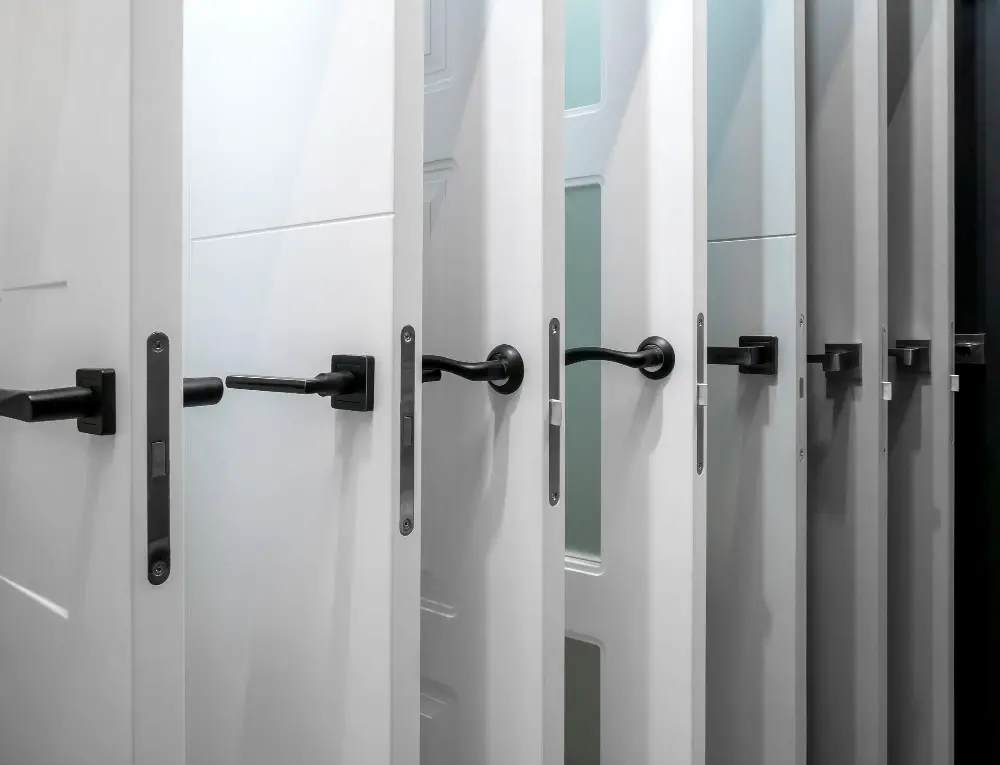
Doors can be classified based on their material, design, and function. Some common materials used for doors include wood, metal, fiberglass or glass.
The design of the door can also vary greatly depending on its intended use and aesthetic appeal.
For example, French doors have multiple panes of glass that allow natural light into a room while providing an elegant look. Sliding doors are another popular option that saves space by sliding along tracks instead of swinging open like traditional hinged doors.
In terms of function, interior and exterior doors serve different purposes within your home or building structure. Interior doors provide privacy between rooms while exterior ones protect against weather elements such as wind and rain.
Understanding the different types of door options available is crucial when selecting new ones for your home renovation project or replacement needs.
Door Frame Basics
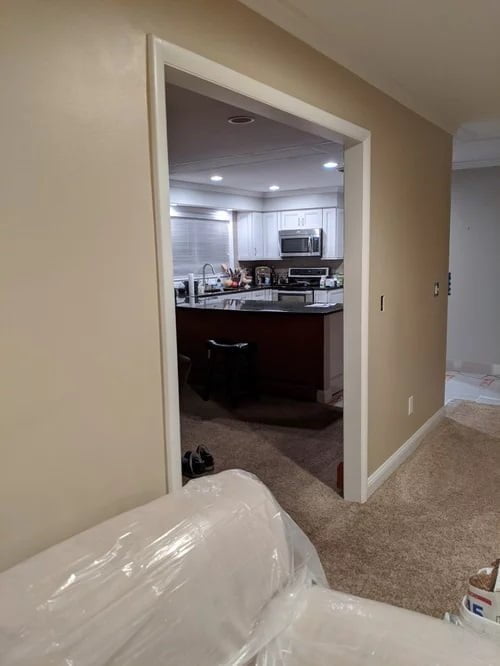
A door frame is the structure that surrounds and supports the actual door. It’s important to note that not all doors come with frames included, so you may need to purchase them separately.
Door frames are typically made from wood or metal and come in various sizes and styles depending on your needs. The most common type of frame for interior doors is called a “jamb” which consists of two vertical pieces (called side jambs) and one horizontal piece (called a head jamb).
Exterior doors often have additional components such as threshold plates at their base.
It’s also worth noting that there are different types of hinges used for attaching doors to their respective frames – these include butt hinges, continuous hinges, pivot hinges among others.
Door Frame Materials

The most common materials used for door frames include wood, metal, and composite. Each material has its own unique advantages and disadvantages.
Wooden frames are a popular choice due to their natural beauty and durability. They can be stained or painted in any color of your choosing to match the style of your home’s interior design.
However, wooden frames require regular maintenance such as painting or staining every few years.
Metal door frames offer excellent strength and durability while requiring minimal maintenance compared with wooden ones. They’re also fire-resistant which makes them ideal for commercial buildings where safety is a top priority.
Composite frame doors combine the best features of both wood and metal by offering superior strength without sacrificing aesthetics like traditional steel doors do.
Pre-hung Doors

These doors come with the frame already attached, making installation easier and faster than installing just a slab door. Pre-hung doors also come with hinges and sometimes even the doorknob pre-installed, which can save you time and money on additional hardware.
One of the main advantages of pre-hung doors is that they are designed to fit perfectly into your existing doorway. This means that there is less room for error during installation, resulting in fewer gaps around the edges of your door.
However, it’s important to note that not all pre-hung doors will fit every doorway perfectly. It’s essential to measure your opening accurately before purchasing any new door or frame combo.
Another advantage of choosing a prehung option is its convenience factor; these types of products often include everything needed for installation in one package – from screws down through weatherstripping!.
Slab Doors
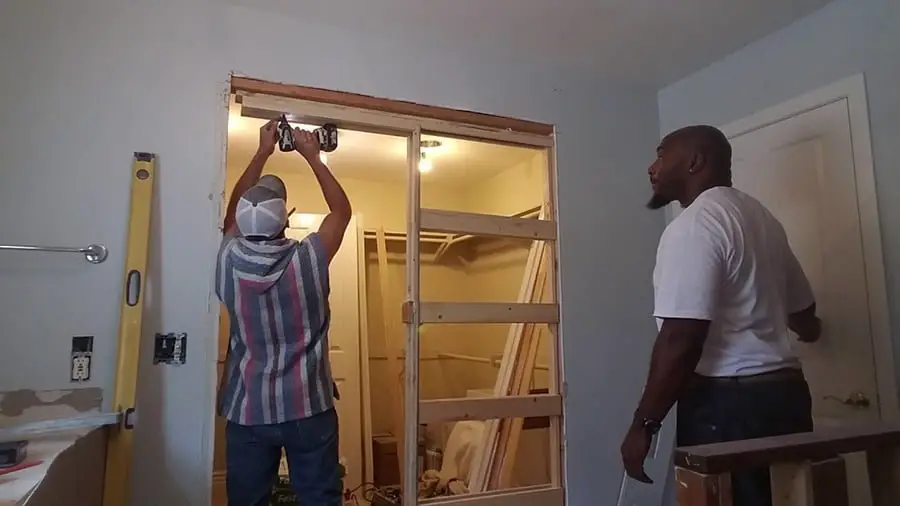
Unlike pre-hung doors, slab doors do not come with a frame attached. Instead, they are simply the door itself and require installation into an existing frame or custom-made one.
One of the main advantages of slab doors is their versatility in terms of design options. They can be customized to fit any style preference and can even be painted or stained to match existing decor.
However, it’s important to note that installing a slab door requires more skill and experience than installing a pre-hung door since you’ll need to ensure that it fits perfectly within your current frame or create one from scratch.
Comparing Prehung and Slab Doors
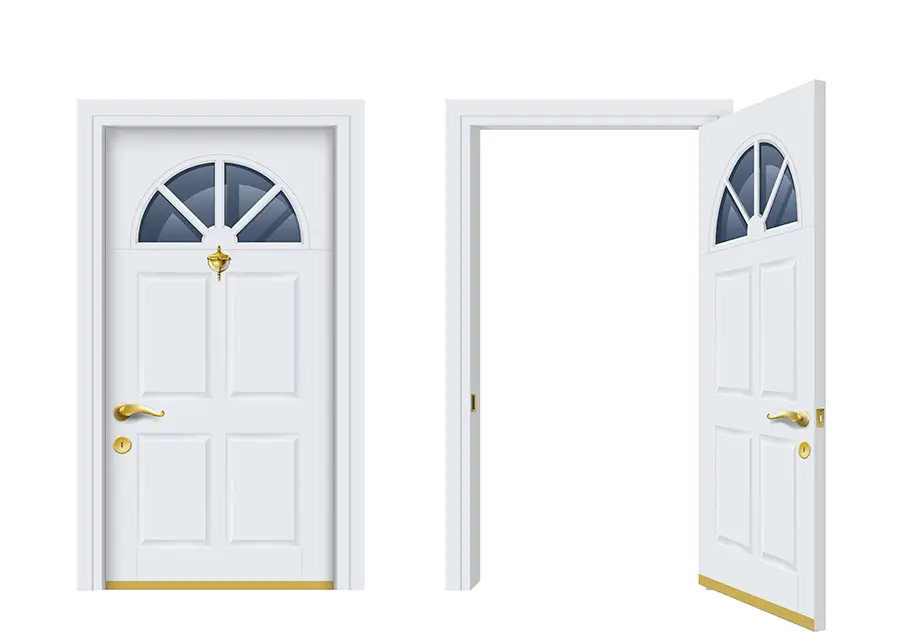
A prehung door is a complete unit that includes the frame and hinges already attached to the door. This type of door is typically easier and quicker to install since everything is already aligned for you.
On the other hand, a slab door does not come with any hardware or framing attached. It’s simply just the flat panel of wood (or other material) that makes up your actual “door.” While this option may require more work during installation, it allows for greater customization in terms of choosing your own hardware and frame materials.
So which one should you choose? Ultimately, it depends on your specific needs and preferences. If convenience and ease-of-installation are top priorities for you, then a prehung option may be best suited for your situation.
However if customization options are important or if budget constraints make buying separate components more feasible than investing in an all-in-one solution like pre-hung doors then going with slab doors might be better suited towards fulfilling those requirements.
Door and Frame Compatibility
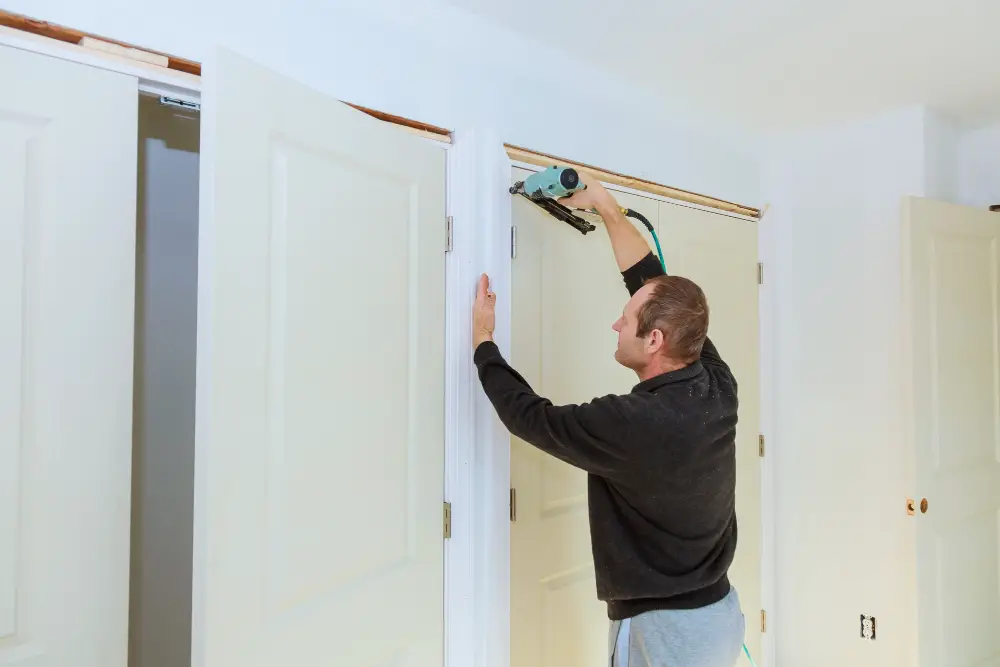
If you’re replacing an old door and want to keep the same frame, you’ll need to make sure that the dimensions of your new door match those of your current opening. On the other hand, if you’re installing a brand-new entryway or interior doorway, you may have more flexibility in terms of choosing both a door and frame that work well together.
It’s also worth noting that some doors come pre-hung with frames included while others are sold as slabs without any framing at all. Pre-hung doors can be easier for DIY installation since they come ready-to-install right out of the box; however, they may not always fit perfectly into existing openings without modification.
Custom Door Frames
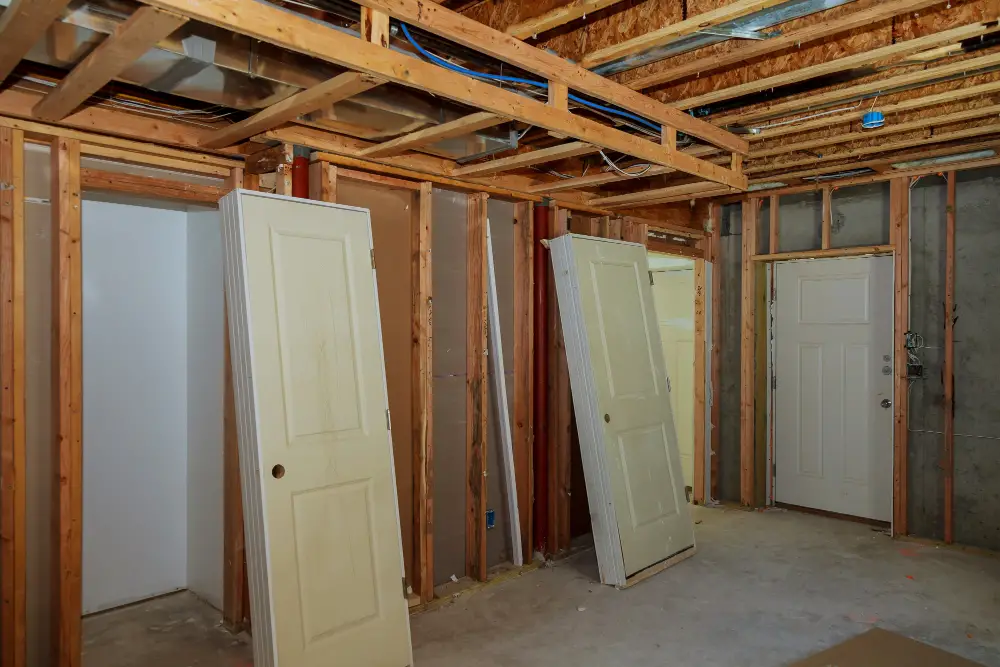
Custom door frames can be made from various materials such as wood, metal or fiberglass. They are designed specifically for your doorway’s dimensions and style preferences.
One of the benefits of custom door frames is that they can add value to your home by enhancing its overall aesthetic appeal. They offer greater flexibility in terms of design options compared with pre-made doors.
However, it’s important to note that custom door frames come at a higher cost than standard pre-hung or slab doors due to their bespoke nature. The installation process also requires more time and expertise since each frame must be measured precisely before being crafted.
Pros and Cons of Pre-hung Doors
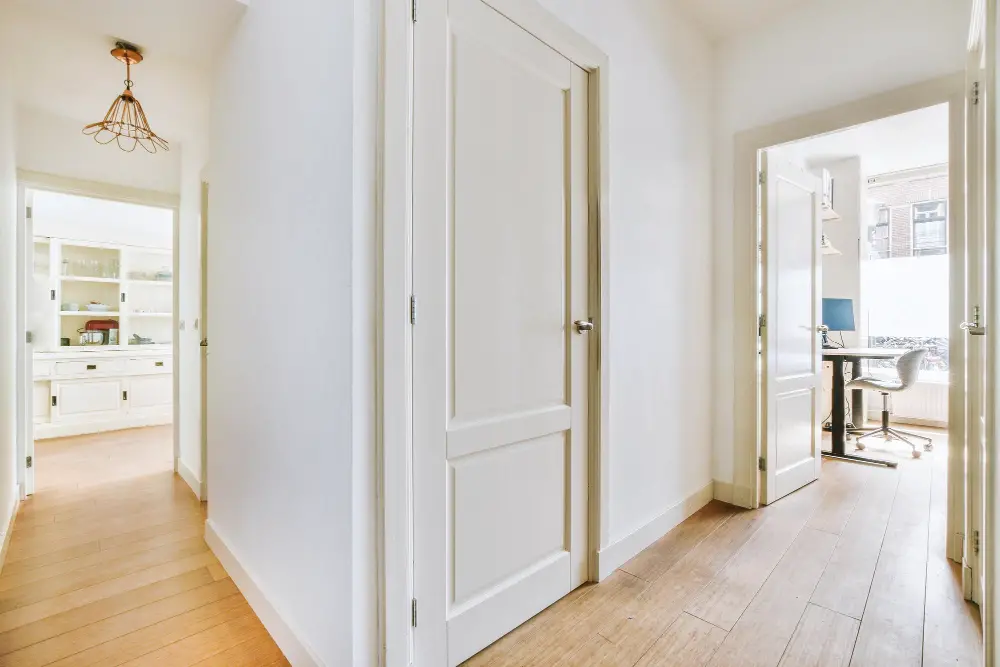
These doors come with the frame already attached, making installation easier and faster than installing a slab door. However, there are pros and cons to consider before choosing this type of door.
One advantage of pre-hung doors is that they come with everything you need for installation in one package. This includes the frame, hinges, and hardware such as doorknobs or handlesets.
With all these components included in your purchase, you won’t have to worry about buying additional parts separately.
Another benefit of pre-hung doors is that they offer better insulation than slab doors because they fit more tightly into the frame due to their design. This can help keep your home warmer during cold weather months while also reducing noise from outside sources like traffic or neighbors.
However, there are some downsides to consider when it comes to pre-hung doors as well. One disadvantage is that these types of doors tend to be more expensive than slab options due mainly because they include extra components like frames and hardware which add up quickly on cost.
Additionally if you’re looking for custom designs then Prehung Doors may not be suitable since most manufacturers only produce standard sizes which may not fit perfectly into non-standard openings without modifications being made by professionals.
Pros and Cons of Slab Doors
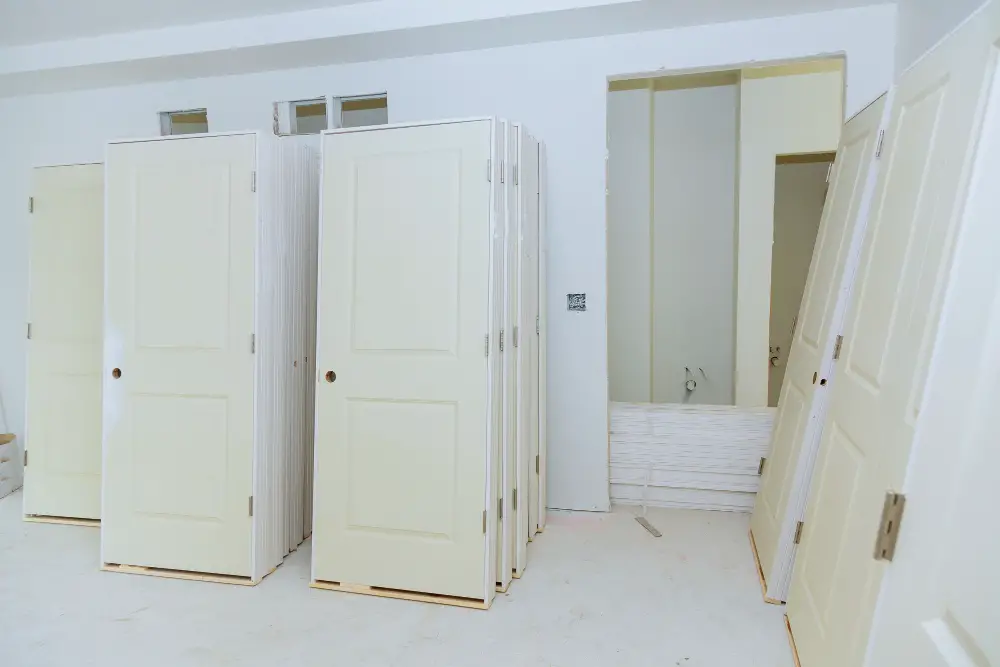
These types of doors come in a variety of styles and materials, making them versatile and customizable. However, like any product, slab doors have both advantages and disadvantages.
Pros:
- Cost-effective: Slab doors tend to be less expensive than pre-hung options since they don’t include the frame.
- Customizable: With slab door options available in various sizes, shapes, colors and finishes you can customize your door according to your preference.
- Easy installation: Since there is no need for installing frames with these types of door replacements it makes it easier for DIY enthusiasts or those on tight budgets.
Cons:
- Installation challenges: Installing a slab door requires more skill than pre-hung ones as you will need to install hinges yourself which may require some carpentry skills
- Compatibility issues with old frames: If you’re looking at replacing an old worn-out wooden framed-door then chances are that the new modern-looking steel or fiberglass slabs won’t fit properly into that older frame
- Limited security features: Unlike Prehung Doors, Slab Doors do not come equipped with locks so if security is one of your top priorities then this might not be an ideal option
How to Choose the Right Door for Your Home

First and foremost, you’ll want to think about the purpose of the door. Is it an exterior or interior door? Will it be used frequently or infrequently? Once you’ve determined this, you can move on to other important considerations such as style and material.
For example, if you’re looking for an exterior door that provides maximum security and energy efficiency while also enhancing curb appeal, a steel or fiberglass option may be best suited for your needs. On the other hand, if aesthetics are more important than functionality when selecting an interior bedroom or bathroom doors then wooden options with intricate designs might work better.
Another factor is budget; some materials like solid wood tend to cost more than others like hollow core doors which offer less durability but come at a lower price point.
Installation Process
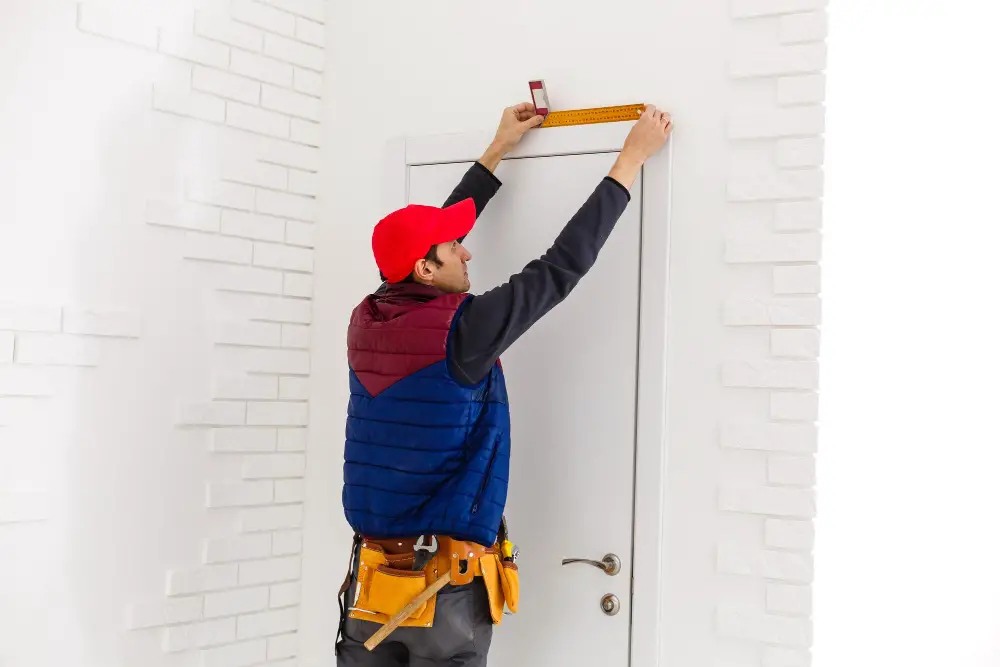
The installation process can vary depending on whether you’re installing a pre-hung or slab door. Pre-hung doors come with the frame already attached, making installation easier for those who are less experienced in home improvement projects.
Slab doors require a bit more work as they need to be hung onto an existing frame or installed into a new one.
Regardless of which type of door you choose, it’s important to follow proper installation procedures for optimal performance and longevity. This includes ensuring that the opening is level and plumb before beginning any installations, using appropriate tools such as shims and screws during assembly, sealing gaps between the frame and wall with weatherstripping or caulk once everything is in place.
If you’re not confident in your ability to install a new door yourself, consider hiring a professional contractor who has experience working with both prehung doors and slab doors alike.
Installation Tips for Doors and Frames

First and foremost, make sure you have all the necessary tools on hand before beginning the installation process. This may include a drill, screws, shims, leveler or plumb line.
It’s also important to measure twice before making any cuts or drilling any holes in your walls or door frames. Taking accurate measurements will help prevent mistakes during the installation process.
Another tip is to use shims when installing your door frame. Shims are small pieces of wood that can be used to fill gaps between the wall and frame for proper alignment and stability.
Consider using longer screws than those provided with your pre-hung doors for added security against forced entry attempts.
Retrofitting Door Frames
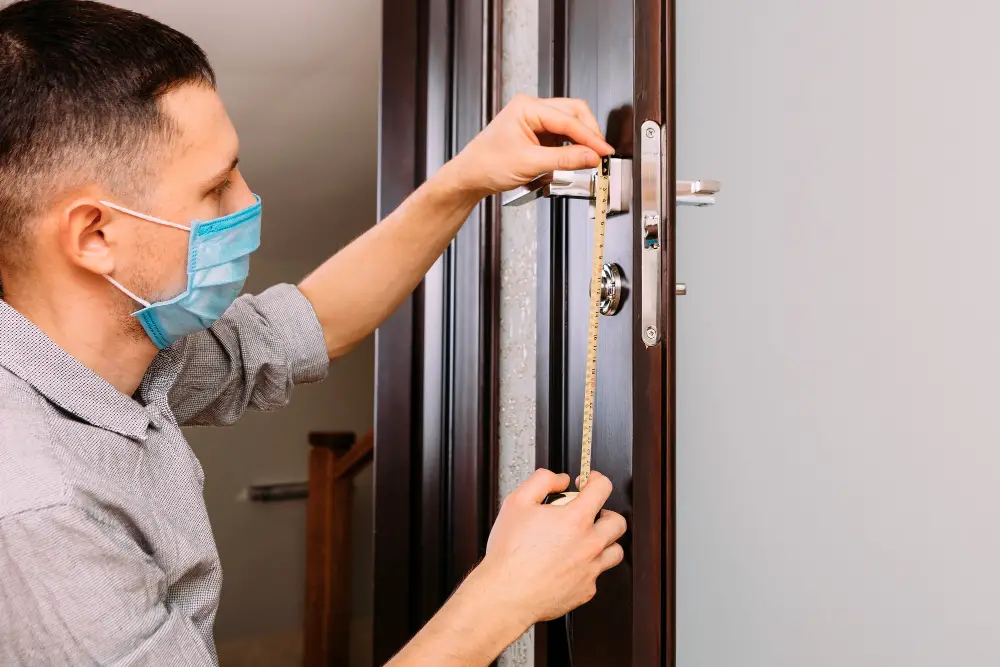
In this case, retrofitting the frame is necessary to ensure a proper fit. Retrofitting involves removing the old frame and installing a new one that fits your new door.
Retrofitting can be more time-consuming and costly than simply purchasing a pre-hung or slab door with matching frames. However, if you have unique requirements for your doors or want to maintain consistency throughout your home’s design elements, retrofitting may be worth considering.
It’s important to note that retrofitting requires some carpentry skills and tools such as saws, hammers, nails/screws etc., so it might not be suitable for everyone. If you’re unsure about whether or not retro-fitting is right for you then consult with professionals who specialize in this type of work before proceeding.
Prehung Door Advantages
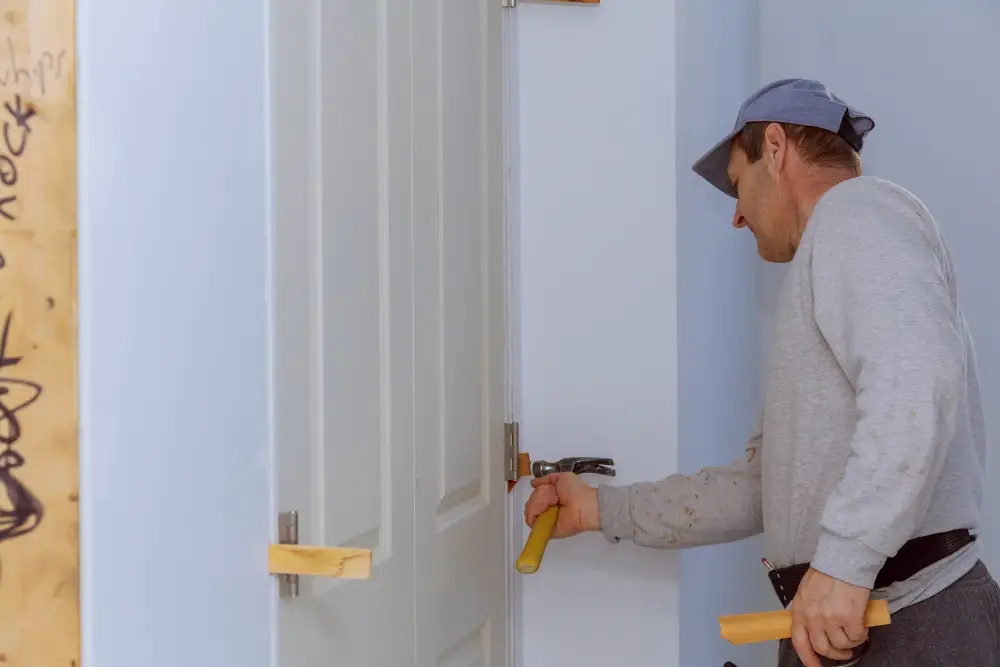
This means that installation can be much easier and quicker than installing just a slab door. With prehung doors, you don’t have to worry about aligning the hinges or making sure they are level because it’s all done for you.
Another advantage is that prehung doors often come with weatherstripping installed, which helps to keep out drafts and improve energy efficiency in your home. Many manufacturers offer customizable options such as different finishes or glass inserts.
If you’re looking for an easy installation process and want to ensure proper alignment between your door and frame, then choosing a pre-hung option may be the way to go. However, keep in mind that these types of doors can be more expensive than just purchasing a slab door on its own.
Ultimately, whether or not you choose to purchase a new door with its accompanying frame will depend on your specific needs and preferences as well as budget constraints.
Prehung Door Disadvantages
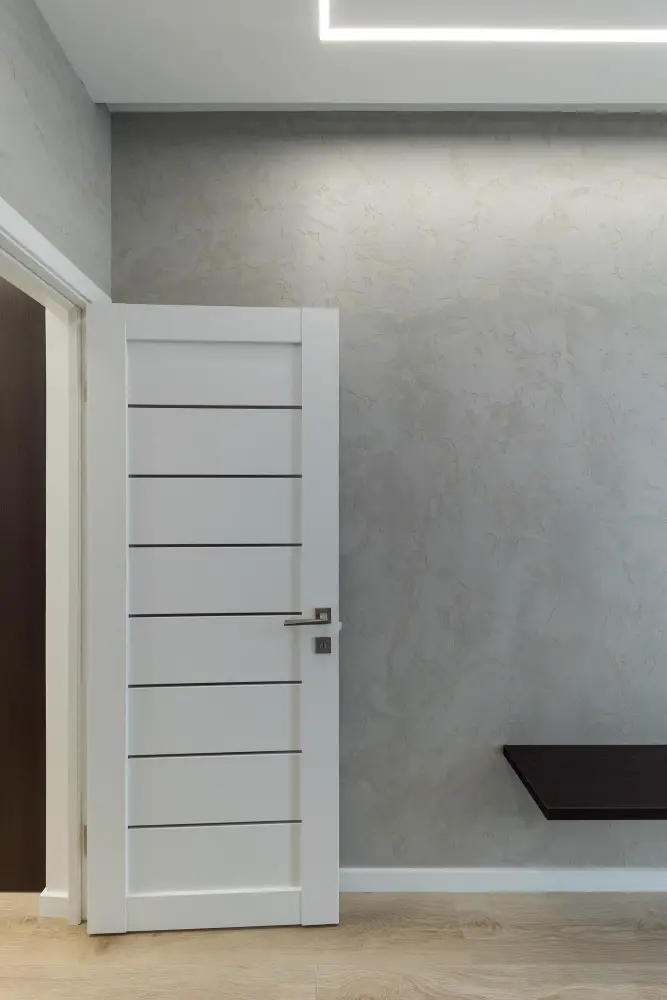
One of the main drawbacks is that they can be more expensive than slab doors. This is because pre-hung doors come with a frame and hinges already attached, which requires additional labor during manufacturing.
Another disadvantage of pre-hung doors is that they may not fit perfectly in your existing door frame. If your door opening isn’t standard size or if there are any irregularities in the wall or floor around it, you may need to make adjustments to ensure a proper fit.
Installing a pre-hung door can be more challenging than installing a slab door since it involves fitting both the frame and the actual door into place at once. This means you’ll need to take extra care when measuring and aligning everything correctly before securing it all in place.
Despite these potential downsides, many homeowners still prefer prehung doors for their convenience and ease of installation.
Slab Door Advantages

Slab doors are sold without frames and hinges, allowing you to choose your own hardware and customize the look of your door. This can be especially beneficial if you have an older home with non-standard frame sizes or unique architectural features that require a custom fit.
Another advantage of slab doors is their affordability. Since they don’t come with pre-installed hardware or frames, they tend to cost less than pre-hung options.
If you’re handy around the house and enjoy DIY projects, installing a slab door can be a fun challenge that allows for greater creativity in design choices.
However, it’s important to note that installing a slab door requires more skill than hanging a pre-hung one since it involves attaching hinges and drilling holes for knobs or handles on your own. If this sounds daunting or time-consuming but still want some level of customization in terms of style/color/finish etc., then consider purchasing semi-customized slabs which come partially assembled (with boreholes) so installation becomes easier while retaining most benefits associated with traditional slabs.
Slab Door Disadvantages

One of the main drawbacks is that they require more work to install than pre-hung doors. Since slab doors do not come with frames, you will need to purchase and install a frame separately or retrofit an existing one.
This can be time-consuming and may require professional installation if you are not experienced in carpentry.
Another disadvantage of slab doors is that they may not fit as well as pre-hung options since there is no frame included for added stability and support. This can lead to issues such as drafts or difficulty opening and closing the door smoothly.
If you opt for a custom-sized door, it may be challenging to find a matching frame size on the market which could result in additional costs associated with customization.
While slab doors have their benefits such as flexibility in design choices; it’s essential to weigh these against potential downsides before making your final decision on whether this type of door suits your needs best.
FAQ
Do all doors come with a frame?
All doors do not come with a frame as there are pre-hung doors that include a frame and slab doors that do not include a frame.
Does a Prehung door include the frame?
Yes, a prehung door includes the frame, as it consists of the door, hinges, door jambs, and header assembled together.
Do you have to buy the frame with the door?
No, you do not have to buy the frame with the door, as you can purchase a new door with or without a frame.
Are door frames always included in the purchase of a new door?
Door frames are not always included in the purchase of a new door.
How can I determine if a door I am considering buying comes with a frame?
To determine if a door you are considering buying comes with a frame, carefully examine the product description for any mention of a frame being included.
What are the options for purchasing doors and frames separately or together?
Options for purchasing doors and frames include buying them separately or together, depending on the customer’s preference and requirements.




